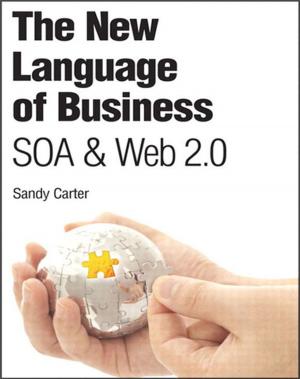What Is Six Sigma for Technical Processes? (Digital Short Cut)
Nonfiction, Science & Nature, Technology, Quality Control, Business & Finance, Industries & Professions| Author: | Clyde M. Creveling | ISBN: | 9780132712927 |
| Publisher: | Pearson Education | Publication: | August 8, 2006 |
| Imprint: | Prentice Hall | Language: | English |
| Author: | Clyde M. Creveling |
| ISBN: | 9780132712927 |
| Publisher: | Pearson Education |
| Publication: | August 8, 2006 |
| Imprint: | Prentice Hall |
| Language: | English |
This is the eBook version of the printed book.
This document discusses how technical leaders and management professionals can implement Six Sigma for the processes they oversee. It explores a relatively new kind of Six Sigma and its associated lean principles that prevent problems in well-designed, structured technical processes in product and technology portfolio definition, research and technology development, product commercialization, and production and service support engineering. This form of Six Sigma focuses on four process arenas that enable a business to attain a state of sustainable growth.
- Strategic Portfolio Renewal Process: Product and technology portfolio definition and development
- Strategic R&TD Process: Basic research and technology development
- Tactical Design Engineering Process: Product commercialization
- Operational Production and Service Support Engineering Process: Post-launch technical support for production and service engineering
This document is not meant to be a comprehensive guide to all technical tasks across an enterprise; instead, it covers those tasks that can be enhanced by Six Sigma and lean discipline. It focuses on what to do (major tasks enhanced by tool sets) and when to do it (major phases within your processes) as leaders—not how as doers. The “how” part for “doers” is a very detailed body of knowledge that can be found in Creveling, Slutsky, and Antis, Design for Six Sigma in Technology and Product Development (Prentice Hall, 2003; www.prenhallprofessional.com/title/0130092231). To learn more about using Six Sigma for technical processes, please consult the forthcoming book Six Sigma for Technical Processes (Prentice Hall, 2007; www.prenhallprofessional.com/title/0132382326). The last section of this document, What’s in the Book Six Sigma for Technical Processes?, has more information about the book.
Contents
What This Short Cut Covers 3
Introduction 3
An Introduction to Phases and Gates 12
Summary 19
What’s in the Book Six Sigma for Technical Processes? 21
About the Author 25
About the Prentice Hall Six Sigma for Innovation and Growth Series 27
This is the eBook version of the printed book.
This document discusses how technical leaders and management professionals can implement Six Sigma for the processes they oversee. It explores a relatively new kind of Six Sigma and its associated lean principles that prevent problems in well-designed, structured technical processes in product and technology portfolio definition, research and technology development, product commercialization, and production and service support engineering. This form of Six Sigma focuses on four process arenas that enable a business to attain a state of sustainable growth.
- Strategic Portfolio Renewal Process: Product and technology portfolio definition and development
- Strategic R&TD Process: Basic research and technology development
- Tactical Design Engineering Process: Product commercialization
- Operational Production and Service Support Engineering Process: Post-launch technical support for production and service engineering
This document is not meant to be a comprehensive guide to all technical tasks across an enterprise; instead, it covers those tasks that can be enhanced by Six Sigma and lean discipline. It focuses on what to do (major tasks enhanced by tool sets) and when to do it (major phases within your processes) as leaders—not how as doers. The “how” part for “doers” is a very detailed body of knowledge that can be found in Creveling, Slutsky, and Antis, Design for Six Sigma in Technology and Product Development (Prentice Hall, 2003; www.prenhallprofessional.com/title/0130092231). To learn more about using Six Sigma for technical processes, please consult the forthcoming book Six Sigma for Technical Processes (Prentice Hall, 2007; www.prenhallprofessional.com/title/0132382326). The last section of this document, What’s in the Book Six Sigma for Technical Processes?, has more information about the book.
Contents
What This Short Cut Covers 3
Introduction 3
An Introduction to Phases and Gates 12
Summary 19
What’s in the Book Six Sigma for Technical Processes? 21
About the Author 25
About the Prentice Hall Six Sigma for Innovation and Growth Series 27















